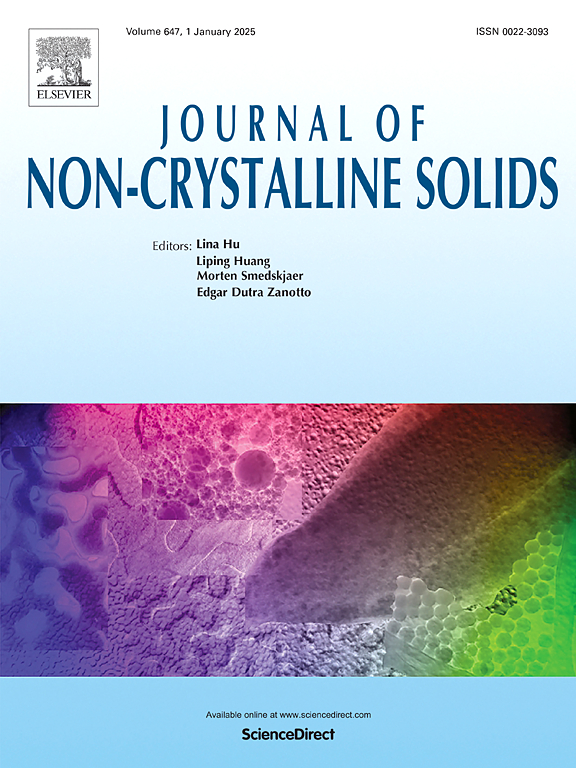不同钼含量的铁基非晶合金在酸腐蚀后的催化特性
IF 3.2
3区 材料科学
Q1 MATERIALS SCIENCE, CERAMICS
引用次数: 0
摘要
采用熔体淬火法制备了一系列具有良好形成能力、柔韧性和较大比表面积的铁基非晶合金丝,可直接用作水电解氧进化反应(OER)的自支撑电极。通过控制 Mo 的含量,制备了 (Fe0.8Ni0.2)71Mo5P12C10B2 (Mo5)、(Fe0.8Ni0.2)71Mo10P12C5B2 (Mo10) 和 (Fe0.8Ni0.2)71Mo15P10C2B2 (Mo15) 合金丝。研究发现,Mo5 和 Mo10 合金仍然呈现完全非晶结构,而 Mo15 合金的主体则由 B2Fe3Ni3 和 Mo6Ni6C 相组成。电化学结果表明,Mo15 合金具有最佳的内在催化活性。在 0.5 M HNO3 中浸泡 1 小时后进行化学蚀刻,Mo15 的 OER 电催化性能进一步提高,在 1 M KOH 中的过电位为 239 mV,Tafel 斜坡为 40.6 mV/dec,电流密度为 10 mA/cm2。本文章由计算机程序翻译,如有差异,请以英文原文为准。
Catalytic properties of Fe-based amorphous alloys with different Mo content after acid corrosion
A series of Fe-based amorphous alloy wires with good formation ability, good flexibility, and a large specific surface area were prepared by the melt quenching method, which can be directly used as a self-supporting electrode for the oxygen evolution reaction (OER) of water electrolysis. By controlling the content of Mo, (Fe0.8Ni0.2)71Mo5P12C10B2 (Mo5), (Fe0.8Ni0.2)71Mo10P12C5B2 (Mo10) and (Fe0.8Ni0.2)71Mo15P10C2B2 (Mo15) alloy wires were prepared. It was found that Mo5 and Mo10 alloys still exhibit a fully amorphous structure, while the main body of Mo15 alloy comprises B2Fe3Ni3 and Mo6Ni6C phases. The electrochemical results showed that Mo15 alloy had the best intrinsic catalytic activity. The OER electrocatalytic performance of Mo15 was further improved by 1 h chemical etching after soaking in 0.5 M HNO3, which showed the overpotential was 239 mV and the Tafel slope was 40.6 mV/dec in 1 M KOH with a current density of 10 mA/cm2.
求助全文
通过发布文献求助,成功后即可免费获取论文全文。
去求助
来源期刊

Journal of Non-crystalline Solids
工程技术-材料科学:硅酸盐
CiteScore
6.50
自引率
11.40%
发文量
576
审稿时长
35 days
期刊介绍:
The Journal of Non-Crystalline Solids publishes review articles, research papers, and Letters to the Editor on amorphous and glassy materials, including inorganic, organic, polymeric, hybrid and metallic systems. Papers on partially glassy materials, such as glass-ceramics and glass-matrix composites, and papers involving the liquid state are also included in so far as the properties of the liquid are relevant for the formation of the solid.
In all cases the papers must demonstrate both novelty and importance to the field, by way of significant advances in understanding or application of non-crystalline solids; in the case of Letters, a compelling case must also be made for expedited handling.
 求助内容:
求助内容: 应助结果提醒方式:
应助结果提醒方式:


